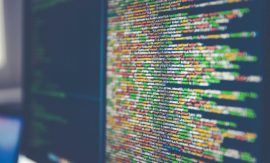With the benefit of Hollerith’s ingenious idea and business sense, IBM long held the monopoly over the commercial use of data processing technology. The early ERP software also originated from IBM. Today, the most widely used ERP software packages are based on the MRP II concept and, increasingly, incorporate just-in-time and both the variant- and the processor-oriented concept. Although the trend is toward standard software, company-specific packages are still very important.
If we consider the question of the quality of ERP or SCM software, it is easy to draw different conclusions, depending on the initial viewpoint. Many misunderstandings are caused by the terms PPC system, which is used for both the task of logistics and for the software used to support it. It is therefore important to understand the background behind the arguments used to defend the positions that are adopted — which can lead to totally contradictory views.
Thus, many businesspeople will find it difficult to understand how an ERP or SCM software package, which is an expensive tool, is unable to influence their most important corporate objectives. This is still largely attributable to the vendors who promise too much in this respect because they know what the boss wants to hear. Thus, it is important not to raise any false expectations concerning the possibilities of ERP or SCM software. Its strengths are that it can be used to represent products and production and procurement processes (make-or-buy) and to administer orders, and thus for administration and preparing accounting. By recording and processing the data (and compressing it statistically), ERP or SCM software thus provides the information needed to make decisions concerning planning & control.
Acceptance and the range of implementation of ERP software depend on the way in which the software is implemented, the support given to employees during implementation, and the training they receive. Employees must feel that the actual software is suitable for their own work and that they will retain freedom of choice in their work. People who work with ERP software every day must not assume, however, that it is sufficient just to master the IT aspects. They must also have a thorough understanding of the company’s processes and continuously adapt them to the needs of the market and individual products.
Course 9: Sections and their intended learning outcomes

Course 9 – ERP Software and SCM Software
Intended learning outcomes: Describe software used for logistics purposes. Explain contents of logistics software packages. Disclose factors for successful implementation of logistics software.

9.1 Software in the Area of ERP and SCM: An Introduction
Intended learning outcomes: Produce an overview on history and origin of ERP software. Disclose scope and range of ERP and SCM software.

9.2 Contents of ERP Software and SCM Software
Intended learning outcomes: Describe classical MRP II / ERP software. Present software for customer order production, for the process industry, for transcorporate planning & control in a supply chain, and for Customer Relationship Management (CRM). Differentiate between standard and company-specific software.

9.3 Factors for Successful Implementation of ERP Software and SCM Software
Intended learning outcomes: Explain possibilities and limitations of the IT support of planning & control. Disclose factors that influence individual acceptance and the range of implementation of ERP software.

9.4 Summary
.

9.5 Keywords
.

9.6 Scenarios and Exercises
Intended learning outcomes: Review factors that influence people’s acceptance of ERP software. Differentiate between standard and company-specific software. Describe basic issues of software for transcorporate planning & control.

9.7 References
.
